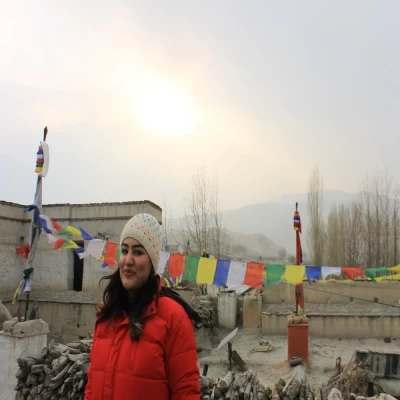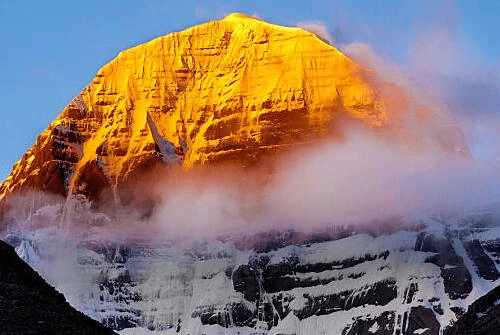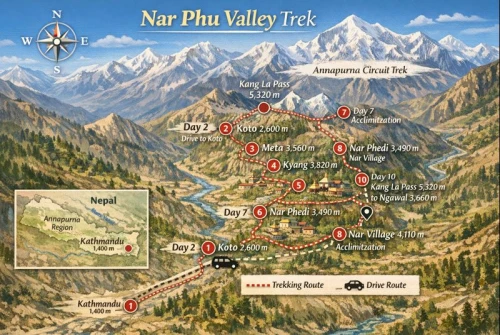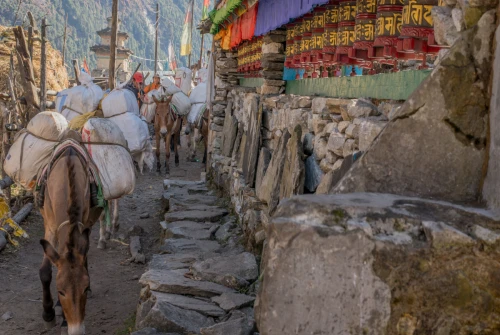The Everest Base Camp (EBC) Trek is a dream for millions around the globe, but for Indian citizens, the journey to the foot of the world’s highest peak holds a unique set of advantages. While the mesmerizing landscapes, spiritual ambiance, and the challenge of high-altitude trekking remain universal, the experience for Indians is markedly different due to proximity, cultural familiarity, cost-effectiveness, and simplified travel logistics. Whether you’re a solo traveler, part of a group, or a seasoned hiker, understanding these unique benefits can transform your EBC trek from a mere expedition to a life-altering journey.
Over the past decade, there’s been a noticeable surge in Indian trekkers choosing Nepal as their adventure playground. The Everest Base Camp trek, in particular, has gained traction not just because of the prestige associated with it but also due to the ease of access and budget-friendly planning options available to Indian nationals. This article delves into the unique aspects of how and why the Everest Base Camp Trek is particularly well-suited for Indian citizens, from cost advantages and language familiarity to simplified permit requirements and dietary preferences.
So, if you’re an Indian dreaming of standing at the base of the mighty Everest, read on. This guide is tailored specifically for you.
What Makes the Everest Base Camp Trek So Popular?
For adventurers across the globe, the Everest Base Camp Trek represents the pinnacle of high-altitude hiking. It’s not just about walking on rugged trails; it's a spiritual journey, a physical challenge, and a visual feast all rolled into one. The route snakes through ancient Sherpa villages, Buddhist monasteries, and awe-inspiring Himalayan vistas that leave even the most seasoned travelers speechless.
But what makes the EBC Trek so irresistible is its accessibility to “ordinary” adventurers. You don’t need to be a mountaineer or carry oxygen tanks to reach the base camp. With proper planning, acclimatization, and a good guide, the trek is achievable for many fitness levels. Plus, standing at 5,364 meters in the shadow of Everest is a badge of honor you’ll carry for life.
Indian trekkers are increasingly drawn to this experience not just for the adventure, but also for its deeper cultural and emotional significance. Many feel a spiritual connection with the Himalayas, and the journey becomes more than just a trek; it becomes a pilgrimage. Add to that the affordability factor and easy accessibility from India, and it’s clear why this route is becoming a favorite among Indian citizens.
Understanding the Unique Experience for Indian Trekkers
Indian trekkers enjoy a distinct edge over many international travelers when it comes to the Everest Base Camp trek. For starters, there's the comfort of geographic proximity. Nepal is next door. No long-haul flights or complicated travel itineraries, just a quick flight or an overnight train-bus combo to the Nepal border, and you’re almost there.
Culturally, too, Indian travelers feel right at home in Nepal. The shared historical roots, linguistic similarities, religious overlap, and mutual hospitality make for a welcoming and warm trekking environment. This cultural familiarity adds a sense of ease that many Western trekkers don’t experience. From bargaining in local markets to chatting with teahouse owners in Hindi or Nepali, everything feels more personal and connected.
Moreover, Indian trekkers often find it easier to adapt to local food, weather conditions, and customs. This reduces travel fatigue and helps them focus on the actual trekking experience. While foreign trekkers may have to navigate unfamiliar cuisines or cultural nuances, Indians often slide into the Himalayan rhythm with ease.
Visa and Travel Regulations for Indian Citizens
One of the biggest perks of being an Indian citizen trekking in Nepal is the visa-free entry. Under the SAARC (South Asian Association for Regional Cooperation) agreement, Indian nationals don’t need a tourist visa to enter Nepal. This removes a major bureaucratic step that travelers from other countries must handle in advance or on arrival.
Instead of a visa, Indian citizens need to carry any one of the following:
A valid Indian passport
A voter ID card
A registration certificate issued by the Indian embassy in Nepal (in rare cases)
You’ll also need to fill out an arrival form at immigration, but the process is swift and simple. Most flights from India land at Tribhuvan International Airport in Kathmandu, where immigration officers are accustomed to handling Indian tourists. If you’re traveling overland, several border checkpoints like Sunauli-Bhairahawa and Raxaul-Birgunj offer quick processing.
This relaxed entry policy saves time, money, and paperwork, a significant advantage over other trekkers who must arrange visas and possibly show return tickets, proof of funds, or hotel bookings.
Cost Comparison: Indian Trekkers vs. Others
The cost of the Everest Base Camp Trek can vary widely depending on your preferences, but for Indian citizens, it’s generally much more affordable compared to Western trekkers. One of the most obvious cost advantages is in airfare. A round-trip ticket from Delhi to Kathmandu can cost as little as ₹7,000 to ₹12,000, especially during off-peak seasons. Compare that to someone flying from New York or London, who might spend over ₹80,000 just on flights!
Then there’s the exchange rate. The Indian Rupee holds more value against the Nepali Rupee (1 INR ≈ 1.6 NPR), making daily expenses from meals to souvenirs considerably cheaper. Local trekking agencies also often offer Indian-specific packages that are priced lower than those marketed to foreigners.
Moreover, since Indian trekkers are often familiar with local cuisine and culture, they don’t need to splurge on “comfort” items like imported food or private guides. Group discounts, Indian-speaking guides, and homestay-style lodging further reduce the financial burden. A full Everest Base Camp Trek that might cost a foreigner ₹2.5 to ₹3 lakhs could be done by an Indian for as little as ₹1 to ₹1.5 lakhs if planned smartly.
Travel Logistics from India to Nepal
Traveling from India to Nepal is remarkably straightforward, and Indian trekkers enjoy a host of convenient options to kickstart their Everest Base Camp adventure. Whether you prefer flying or overland routes, the journey is smoother and significantly more cost-effective compared to travelers coming from Europe or North America.
By Air: The most popular way to enter Nepal is by flying into Tribhuvan International Airport (TIA) in Kathmandu. Several Indian cities like Delhi, Kolkata, Varanasi, and Bangalore offer direct flights. These flights are not only affordable but also frequent, making last-minute plans much easier for Indian travelers. Flight durations typically range from 1 to 2.5 hours.T
By Road: Many budget-conscious trekkers opt for overland travel. Major border crossings like:
Sunauli-Bhairahawa (Uttar Pradesh)
Raxaul-Birgunj (Bihar)
Panitanki-Kakarbhitta (West Bengal)
These routes are easily accessible by train and bus. After crossing into Nepal, buses and local taxis are available to reach Kathmandu or to trekking hubs like Pokhara directly.
Once in Kathmandu, the next phase involves either flying or driving to Lukla, the traditional starting point of the EBC trek. Indian trekkers typically choose a Kathmandu-Lukla flight, which takes about 30 minutes and offers jaw-dropping Himalayan views. Budget travelers might consider trekking from Jiri, though this adds several days to the itinerary.
With minimal red tape, flexible travel options, and low transportation costs, Indian trekkers can focus more on the trek itself than the travel logistics.
Preferred Trekking Packages for Indian Nationals
Trekking agencies in both India and Nepal have tailored packages specifically for Indian clients, making the planning process easier and more cost-effective. These packages vary in price and amenities, catering to different preferences, from budget solo trekkers to luxury group trekkers.
Budget-Friendly Packages
Many Indian trekkers opt for affordable group packages, which can start from as low as ₹75,000 to ₹1.2 lakhs for a 12-14 day itinerary. These usually include:
Domestic flights to Lukla
Basic accommodation in teahouses
Daily meals
Trekking permits
English/Hindi-speaking guides and porters
Mid-Range and Premium Options
For those looking for extra comfort, mid-range packages offer upgraded lodges, private rooms, oxygen support, and even helicopter evacuation insurance. Premium experiences can cost up to ₹2.5 lakhs but offer a more cushioned trek.
Group Departures and Custom Plans
Group departures from Indian metro cities are gaining popularity. These trips often begin in Delhi or Mumbai and manage everything from domestic travel to Kathmandu to the full trek itinerary. Some companies even offer cultural add-ons, such as Kathmandu sightseeing or short detours to Pokhara after the trek.
The key benefit? Indian travelers get to trek with fellow citizens, share cultural understanding, enjoy home-style meals, and communicate in familiar languages—all of which make the journey far more enjoyable and less intimidating.
Food and Accommodation Preferences
Let’s be honest, food can make or break a trek. And for Indian trekkers, the Everest Base Camp trail offers a surprisingly wide range of comforting options that make this high-altitude journey more palatable.
Indian Cuisine on the Trail: Many teahouses along the trail serve dal bhat, a staple in both Nepali and Indian diets, consisting of lentils, rice, vegetables, and pickles. This high-carb, protein-rich meal fuels trekkers efficiently. You’ll also find:
Parathas
Vegetable curry
Rice pulao
Aloo gobi
Masala chai
Dietary Familiarity Reduces Fatigue: Unlike Western trekkers who may struggle to adjust to local food, Indian trekkers enjoy familiar meals that reduce the chances of digestive issues and taste fatigue. This is a massive psychological boost when you're trekking for hours at high altitude.
Accommodation Style: Most trekkers stay in teahouses, modest, locally-owned lodges with twin rooms, shared bathrooms, and common dining areas. Many owners understand Indian cultural expectations and often go the extra mile to make Indian guests feel at home. Some teahouses even play Bollywood music or offer Indian TV channels in the common room.
Vegetarian and Vegan Options: Indian vegetarians will find the food extremely accommodating. There’s no pressure to eat unfamiliar meats or non-vegetarian dishes. Most meals are cooked fresh and use local vegetables, making them both delicious and healthy.
Packing Tip: Some trekkers carry ready-to-eat Indian meals or spice mixes to customize their food. Instant noodles, energy bars, and pickle packets can also be lifesavers during long trek days.
Health & Acclimatization for Indian Trekkers
While Indian trekkers have several advantages, health and acclimatization remain universal concerns. The Everest Base Camp Trek takes you from 2,860 meters (Lukla) to over 5,364 meters (Base Camp), and that kind of altitude change can take a toll on anyone.
Pre-Trek Preparation
Indian plains are mostly at sea level, so Indian trekkers must train and prepare in advance. A good pre-trek fitness routine should include:
Cardio: Running, brisk walking, or cycling
Strength training: Especially legs and core
Altitude exposure, if possible: Treks in Himachal or Uttarakhand
Altitude Sickness Awareness
Many trekkers experience Acute Mountain Sickness (AMS) due to rapid ascent. Indian trekkers need to follow proper acclimatization strategies:
"Climb high, sleep low" principle
Rest days at Namche Bazaar and Dingboche
Hydrate well and avoid alcohol
Over-the-counter medications like Diamox can help, but must be taken under medical advice.
Medical Facilities & Insurance
There are several health posts along the trail, especially in Namche Bazaar and Pheriche. However, serious cases may require evacuation by helicopter. While Indians don’t always buy travel insurance for Nepal trips, it's strongly recommended for high-altitude treks. Several Indian and Nepali insurers now offer plans that cover high-altitude illnesses.
Ultimately, while Indian trekkers may feel culturally at ease, the physical demands of the EBC Trek remain the same for all. Smart preparation and responsible trekking can make all the difference.
Equipment and Clothing Choices
Trekking to Everest Base Camp requires smart packing. Indian trekkers often face a unique challenge balancing cost, comfort, and weight. While international trekkers might arrive in Nepal with premium gear, Indians often look for cost-effective and practical solutions, which can be both an advantage and a challenge.
What to Pack
Here’s a general packing list tailored for Indian trekkers:
Layered clothing: Thermal inners, fleece jackets, waterproof shells
Trekking pants: Lightweight, quick-dry material preferred
Headgear: Woolen cap, sun hat, balaclava
Footwear: Quality trekking boots (well broken-in) and woolen socks
Gloves: Inner liners + insulated outer gloves
Sleeping bag: Rated for -10°C or colder\
Accessories: Sunglasses, trekking poles, power banks, headlamp
Rent vs. Buy
Buying all-new gear can be expensive. Thankfully, Kathmandu’s Thamel area offers a thriving trekking gear rental and resale market. Indian trekkers can rent items like sleeping bags, down jackets, and crampons at a fraction of the cost. Many shops offer combo rental deals for EBC trekkers.
Pro Tip: Don’t compromise on boots and a backpack. These should be high-quality, well-fitted, and preferably bought in advance from a trusted store in India. You’ll be wearing them every day—comfort is non-negotiable.
Where to Buy in India
Cities like Delhi, Bangalore, Mumbai, and Pune have adventure gear stores like Decathlon, Wildcraft, and Quechua, which offer reasonably priced trekking gear. Buying before the trip allows you to test and adjust your gear.
In summary, Indian trekkers can gear up for the EBC trek without breaking the bank, provided they plan smartly and invest in the right essentials.
Cultural Connection and Spiritual Bond
For many Indian trekkers, the Everest Base Camp journey transcends physical adventure—it becomes a deeply spiritual and emotional experience. The Himalayas are not just mountains to Indians; they are sacred, revered in mythology, and central to spiritual belief systems.
Shared Religious Threads
Nepal and India share deep cultural and religious ties. Along the EBC trail, trekkers encounter countless Buddhist stupas, prayer flags, and monasteries, which resonate strongly with Indian spiritual traditions. The chanting of mantras and the presence of monks feel both exotic and familiar.
Some trekkers even visit Pashupatinath Temple in Kathmandu before heading to the mountains, seeking blessings for a safe journey. The whole trip can feel like a blend of pilgrimage and adventure.
Emotional Motivation
Unlike Western trekkers who often see the EBC as a physical conquest, many Indians approach it as a personal transformation—a challenge to overcome inner and outer limits. The mountains often stir deep reflection, making the trek emotionally powerful.
Respect and Reverence
Indian trekkers also tend to show cultural respect towards the Sherpa people, monks, and local traditions. This mutual respect often leads to warmer interactions and even lifelong friendships.
The spiritual harmony, combined with shared cultural values, makes the Everest Base Camp Trek a soulful journey for Indian citizens.
Language and Interaction Comfort
Communication plays a crucial role in any travel experience, and for Indian trekkers in Nepal, it’s an area where they feel especially at ease. The linguistic and cultural similarities make interactions more natural and less transactional.
Hindi-Nepali Connection
Nepali and Hindi share similar roots and vocabulary. Even if you don’t speak Nepali, chances are you’ll understand basic conversations. Many locals also speak Hindi fluently, especially in tourist areas and among guides and porters.
This linguistic advantage:
Makes bargaining and shopping easier
Reduces misunderstanding with guides and lodge owners
Enhances cultural immersion
English Isn’t Mandatory
While most trekking companies use English as the primary language for international trekkers, Indian trekkers can opt for Hindi-speaking guides and groups, making the experience more comfortable and inclusive.
Deeper Connections
Shared languages foster better storytelling, learning, and empathy. You’re not just a tourist—you’re a guest, often treated like family. From casual jokes with porters to emotional conversations with fellow Indian trekkers, this ease adds another layer to the journey.
In short, language becomes a bridge rather than a barrier, making every interaction feel more genuine.
Permits and Paperwork
Although Indian citizens don’t need a visa to enter Nepal, trekking permits are still required to access the Everest Base Camp region. Luckily, the process is smoother and often cheaper for Indian nationals.
Required Permits for EBC Trek
As of now, Indian trekkers need:
Sagarmatha National Park Entry Permit – ₹1,000–₹1,500 approx.
Khumbu Rural Municipality Permit – ₹1,500 approx.
These permits are available at:
Nepal Tourism Board offices in Kathmandu or Pokhara
Checkpoints at Monjo and Lukla
TIMS Card Exception
Foreigners must get a Trekkers’ Information Management System (TIMS) card, but Indian citizens are exempt from this under recent policy changes.
Using Trekking Agencies
Most Indian trekkers use agencies that handle permit procurement as part of the package, ensuring:
No queue hassles
No paperwork confusion
Timely documentation
Always carry multiple passport-sized photographs and a valid ID. Aadhar is often not accepted at checkpoints; carry a passport or voter ID card.
Safety and Security Aspects
Nepal is one of the safest countries in South Asia for trekking, and the Everest region is especially well-patrolled and regulated. For Indian trekkers, the journey is made even safer by cultural familiarity, government support, and trail awareness.
Trail Security
The EBC route is dotted with checkpoints, lodges, and Sherpa villages where help is readily available. Incidents of theft or violence are almost nonexistent on this trail. Most lodges have emergency contact systems for medical or logistical assistance.
Embassy Support
India has a strong diplomatic presence in Nepal:
Embassy in Kathmandu
Consulates in Birgunj and other cities
In case of any legal or medical emergency, Indian citizens can reach out for support easily.
Local Safety Culture
Sherpas and Nepali guides are trained in basic first aid, altitude sickness management, and emergency evacuation protocols. This creates a secure trekking environment, especially for Indian first-timers.
By sticking to known routes, booking through reputable agencies, and staying informed, Indian trekkers can enjoy a safe and rewarding Himalayan experience.
Environmental Responsibility
With the growing number of Indian trekkers exploring the Everest Base Camp trail, the emphasis on eco-conscious trekking has become more important than ever. While the region’s natural beauty is breathtaking, it's also incredibly fragile. Indian travelers, like all others, bear a responsibility to protect and preserve the environment they’re exploring.
Rising Awareness Among Indian Trekkers
Thankfully, awareness about sustainable tourism is on the rise in India. More trekking agencies and influencers are educating Indian trekkers about responsible travel practices, including:
Carrying reusable water bottles instead of buying plastic ones
Using eco-friendly toiletries
Packing out trash, especially non-biodegradable waste
Avoiding the overuse of firewood for heating meals or rooms
Leave No Trace Principle
Indian trekkers are increasingly adopting the “Leave No Trace” philosophy, ensuring that their presence doesn’t negatively impact the local environment. This includes staying on marked trails, not disturbing wildlife, and respecting local customs and traditions.
Support Local and Sustainable Options
Supporting eco-lodges, buying locally made gear, and hiring local porters and guides ensures that Indian trekkers contribute positively to the local economy. This not only sustains livelihoods but also encourages Nepali communities to maintain a clean and welcoming environment.
Participating in Cleanup Drives
Some Indian trekking groups organize or participate in clean-up treks where they collect litter along the trail. These small efforts collectively make a big difference.
In summary, Indian trekkers have both the opportunity and the responsibility to set an example in eco-conscious trekking. After all, the beauty of Everest isn’t just in reaching the base camp, but in preserving it for generations to come.
Conclusion
For Indian citizens, trekking to Everest Base Camp is not just more accessible—it's deeply cultural, emotional, economical, and logistically simple compared to what many international trekkers face. From visa-free entry and cost-effective travel to a shared cultural bond with the land and people, Indian trekkers have a distinct edge that enhances their experience in subtle but powerful ways.
This trek is more than a trail; it’s a transformative journey. It tests your endurance, rewards your perseverance, and leaves you with memories etched in every snowflake, prayer flag, and sunrise over the Himalayas.
Whether you’re a college student looking for adventure, a corporate professional seeking escape, or a retiree fulfilling a lifelong dream, Everest Base Camp is waiting for you. And as an Indian, your path there is not only achievable but deeply enriching.




